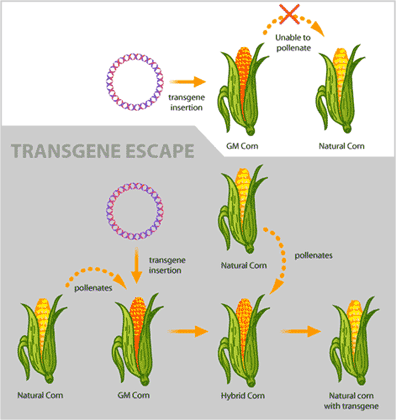Friday, February 27, 2009
http://www.answers.com/topic/transgenic-animal
Transgenic Animal Pros

Through biotechnology and Transgenic animals, scientists manipulate DNA in organisms. Microinjection is the process in which scientists produce the transgenic animals. The point is to research for diseases found in humans. It will increase the output of milk, wool, and help fend off diseases caused by viruses and bacteria. It also produces tender meat that is leaner and healthier. Milk is also produced with no allergic proteins. More diary such as milk, cheese, and yogurt will be produced at more amounts.
Transgenic Mice Help Us Understand Diabetes

Japanese Diabetic researchers took a gene of unknown function in the human body (GPR40) and put it into mice, while observing its behavior in its role to diabetes. After extensive studying of the mice's glucose and insulin behavior, they found that the protein does change the way that insulin is produced and may likely relate to diabetes. The insulin deficiencies found in the mice put the gene as one of the players in diabetes. In studying the gene, there is a possibility that this gene can help explain the reason for diabetes, and as a result can help us move towards a cure.
Article: http://diabetes.diabetesjournals.org/cgi/content/abstract/db09-1233v1
Thursday, February 26, 2009

First Litter of Piglets Born to a Transgenic Pig
A revolutionary new cloning method spawned the first transgenic cloned pigs in August 2007. It was developed at the Foulum Research Centre at the University of Aarhus and the scientists didn't know if the technique would disturb the natural physiology of the animals. It turned out to be a huge success, and one of the cloned pigs has now given birth to the first litter of piglets born to a transgenic clone, a first both the nationally and the world.
Too far?

Scientists have been making technological leaps. They've made transgenic goats and glow in the dark cats, but is this crossing the line with human nature? These are Turkish Angora cats from South Korea that glow under UV lights. Biology Online states that transgenic animals have, " 'genes from another organism put into its genome' which use, 'DNA techniques." The drug ATryn has recently been put in certain milks to help thin blood, "Scientists have genetically modified goats to produce this drug in their milk." This drug can be used to help people with blood clots. The cloned sheep, Dolly, is the more controversial topic, as to whether or not this is out of hand.
Super Goats! Transgenic Goats produce Magic Protein.

Russian-Belarusian scientist are attempting to use goats as a means to mass produce what may be the most valuable protein on the market. Lactoferrin is a protein found only in the milk produced by humans in the early stages of motherhood. So, what makes this protein so special? Apart from it's rarity, Lactoferrin can act as an immune system until an infant's immune system has fully developed, attaching itself to bacteria and virus membranes, nullifying their effect on the body. One hundred female goats have been artificially inseminated with the gene coding for Lactoferrin, and are expected to give birth sometime this summer. If the experiment is proven successful, project managers estimate a $6 Billion a year market for Lactoferrin in the US alone.
Transgenic Goats
Discovery of a Faster Antidepressant--Found in the Brain
 By: Carolyn Fisher
By: Carolyn Fisherp11 is a protein found in the brain, which is suspected to help speed up the process of antidepressant drugs. These drugs take longer than is hoped to kick in, so researchers thought this protein could aim to shorten that period of time. Researchers have linked p11 to serotonin, a modifier of mood. They used transgenic mice to see the relationship between serotonin 4 and p11. It was seen in the mouse, that when p11 and serotonin 4 interact, they produce a rapid antidepressant in the brain.
Link to Article:
http://www.sciencedaily.com/releases/2009/02/090225175531.htm
Bioengineering on the Farm

Recently the F.D.A., Food & Drug Administration, has approved the distribution of a milk from gene-altered goats. It started when one goat was given a DNA strand that had both goat and human traits in the strand. The goats produced from this transformation made a drug called ATryn. this drug is known to help thin the blood and reduce blood clots. In one year, one goat produces as much antithrombin that can be derived from 90,000 blood donations.
http://www.nytimes.com/2009/02/07/business/07goatdrug.html?_r=1&scp=4&sq=F.D.A.&st=cse
Transgenic Fish--A risk to fish populations everywhere


The animal scientist at Purdue University, Bill Muir, and biologist Rick Howard conducted a study to examine the risks and benefits from biotechnology, for example, genetically modified fish. They put Japanese fishes called medaka that had been genetically modified with a growth hormone from Atlantic Salmon into a tank with unmodified fish to see what happens. They found that this experiment could potentially devastate the native populations of fish possibly to extinction. When the unmodified fish look for a mate, they look for the largest fish rather than the fittest. Therefore, they would pick the transgenic fish, who's offspring have a chance of not surviving because of the genetic change. However, they say that this is all a part of testing biotechnology and are going to try to test the transgenic fish in a larger setting and with larger fish next time.
Transgenic Corn - It keeps pests away, but what effect does it have on the ecosystem?
 For centuries farmers have had problems keeping their crops from succumbing to pests. In the last few years a genetically engineered corn that contains a toxin protecting it from pests has been created. It includes a gene from the micro-organism Bacillus thuringiensis, Bt. In Bloomington, Indiana, parts of the toxic corn are washing into nearby streams, killing a type of fly that is eaten by much the aquatic life. This is a major downside to the transgenic corn. These flies are not only a major food source, but they help control the algae population in the area.
For centuries farmers have had problems keeping their crops from succumbing to pests. In the last few years a genetically engineered corn that contains a toxin protecting it from pests has been created. It includes a gene from the micro-organism Bacillus thuringiensis, Bt. In Bloomington, Indiana, parts of the toxic corn are washing into nearby streams, killing a type of fly that is eaten by much the aquatic life. This is a major downside to the transgenic corn. These flies are not only a major food source, but they help control the algae population in the area. Natural Transgenic Clones

In 2007, a cloning method was created at Foulum Research Centre at the University of Aarhus in Denmark. This method used pigs as part of a study on Alzheimer’s disease.
The cloning was a sucess but they weren't sure if the pig couls be able to have and piglets, or if anything physiological would be effected.
But everything was relieved when the first litter of health and normal piglets born to a transgenic clone were successfully delivered.
The success of the Danish research is that they are able to clone using a simple technique and using less money. Also it can be done in simpler laboratories. This in the future will make cloning more accessible.
http://www.icenews.is/index.php/2009/02/27/worlds-first-natural-transgenic-clones-born-in-denmark/
Transgenic Goats: First Step to Producing Healthier Milk

In 2009, Russia is awaiting the 1st generation of transgenic goats to produce lactoferrin in their milk. Lactoferrin is a protein found in human milk. This protein protects a weak human baby's immune system from viruses and bacteria. The good thing about the protein is that there are no bad side effects, but the bad thing is that, so far, scientists have not found a way to mass-produce it. They are hoping that the transformation of this gene into goats will be the first way to mass-produce the protein.
- by Shelby Smith
http://www.russiatoday.com/Top_News/2009-02-10/Goats_link_biotech_and_babies.html